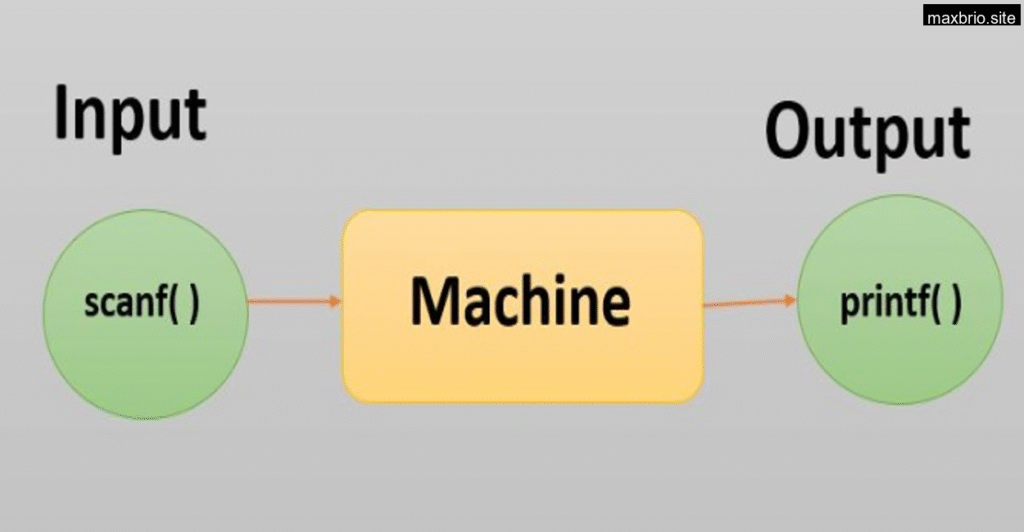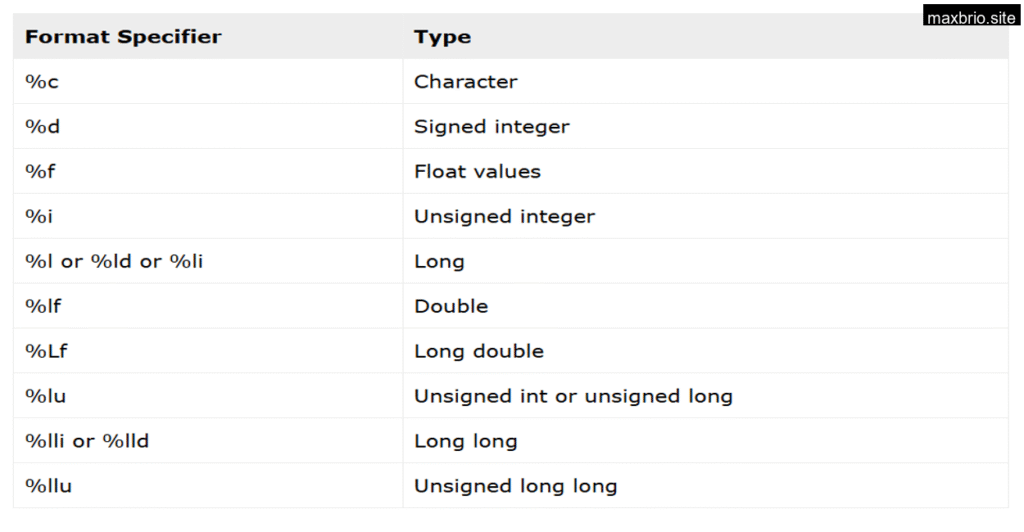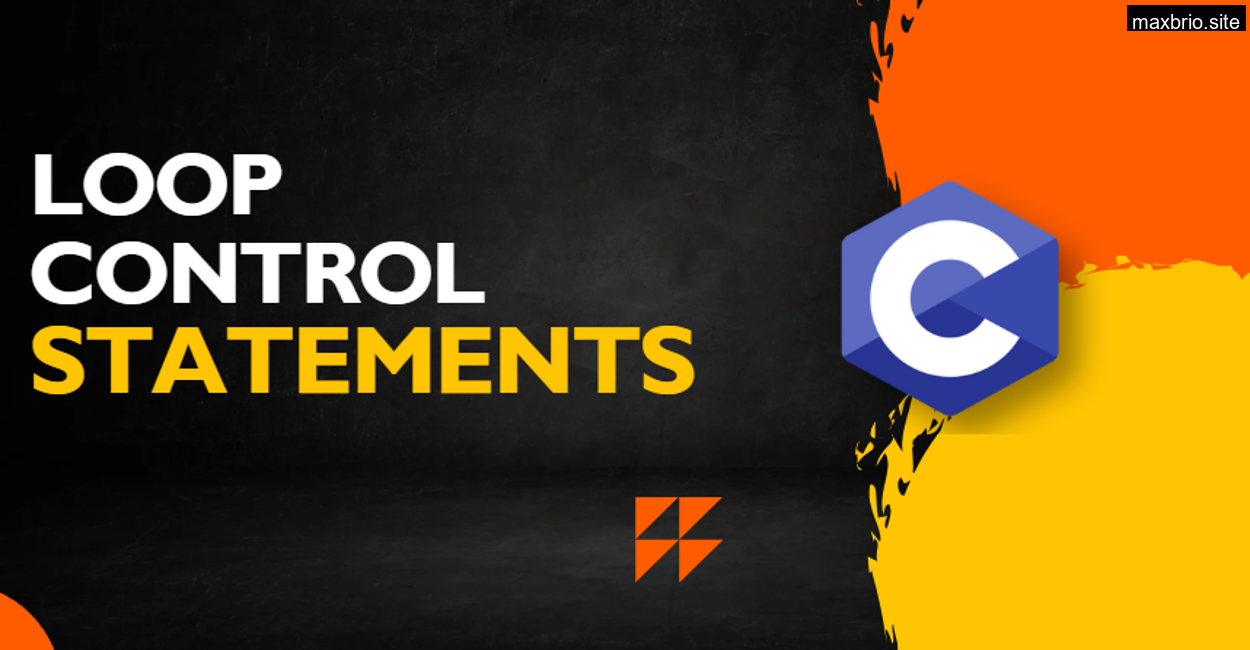It was one of those early Monday mornings when everything smells like chalk dust and half slept dreams. I was setting up the projector in the lab when a student from the front bench let’s call him Arjun raised his hand with frustration dripping from his voice. “Sir, I typed the number. Why did it read garbage?” Ah, the good old scanf() confusion. A rite of passage for every budding C programmer.
Talking vs. Listening: The Yin Yang of printf() and scanf()

When I teach C, I often start with an odd metaphor: I ask the students to imagine a conversation.
“Imagine you’re in a room with a robot,” I say. “You tell it something using printf() that’s you speaking to it. Now, how does the robot listen?”
That’s when I introduce scanf().
If printf() is your mouth in C, then scanf() is your ear.
But ears don’t just absorb sound. They process it, direct it, and most importantly they need to know where to store what they hear.
My First Mistake: Forgetting the Ampersand
I still remember the first time I used scanf() back in college. I was trying to build a tiny calculator program. All I wanted was to take two numbers as input and add them. But instead of correct inputs, I kept getting bizarre results negative numbers, large random values, sometimes even a crash.
My code looked like this:
int a;
scanf(“%d”, a); // WRONG
I spent two hours debugging it.
Eventually, a friend leaned over and said, “You forgot the ampersand, dude.”
scanf(“%d”, &a); // CORRECT
That tiny & changed everything. And that’s when I realized understanding scanf() isn’t just about knowing syntax. It’s about understanding how memory works.
What is scanf() Actually Doing?
Let’s break it down like I do for my first year students.
1. What is scanf short for?
“Scan formatted.”
It takes formatted input from the standard input device in our case, the keyboard and stores it somewhere in memory.
2. What kind of input can it handle?
- Integers (%d)
- Floating point numbers (%f)
- Characters (%c)
- Strings (%s)
- Hex, Octal, etc.

Pretty much anything as long as you tell it what type it is expecting.
3. What’s this ampersand fuss about?
This is the moment I bring out the “house address” metaphor.
“Imagine you’re delivering a pizza,” I tell my class. “You don’t just drop it at a random street. You need the exact house address.”
Similarly, scanf() needs to know where to store the data you give it.
Let’s say you declare:
int age;
If you write:
scanf(“%d”, age); // Wrong
You’re giving it the pizza without the address. The compiler doesn’t know where to put the number. So it puts it… somewhere. And chaos ensues.
But if you write:
scanf(“%d”, &age); // Correct
You’re giving it the address of the variable telling it exactly where to store the data.
The Anatomy of a Simple scanf() Example
Here’s a practical one I use every year in my intro class:
#include<stdio.h>
int main() {
int a, b;
printf(“Enter first number: “);
scanf(“%d”, &a);
printf(“Enter second number: “);
scanf(“%d”, &b);
printf(“Sum: %d\n”, a + b);
return 0;
}
When we run this and enter 45 and 15, the output is:
Enter first number: 45
Enter second number: 15
Sum: 60
What just happened here?
- We asked for two inputs.
- Each input was stored in a specific memory location (thanks to the ampersand).
- We then used those stored values to perform a simple operation.
And suddenly, the screen responds intelligently. That’s when many students light up “Ohhh, so this is how real programs talk to users!”
Common Mistakes I See Every Semester
Forgetting the Ampersand (&)
The classic.
scanf(“%d”, var); // Wrong
Correct:
scanf(“%d”, &var);
Mismatched Format Specifier
Using %d for a float, or %s for an int.
Always match:
int x;
scanf(“%d”, &x);
float y;
scanf(“%f”, &y);
Reading Strings Without Size Limit
This one’s dangerous.
char name[10];
scanf(“%s”, name); // Works, but unsafe
Better yet:
scanf(“%9s”, name); // Leaves room for ‘\0’
Teaching Moment: Letting Them Fail
I’ve developed a little ritual in my classes. When I introduce scanf(), I intentionally let students write it incorrectly the first time. I don’t correct them.
Instead, I let them compile. Run. Watch the garbage appear on screen.
Then I ask:
“Why do you think that happened?”
And someone always says: “Maybe we need to use &?”
Boom. Self discovery. That moment stays with them far longer than any diagram.
Real World Metaphor: Input and a Cup
Imagine you’re pouring water into a cup. You need two things:
- The type of liquid water, juice, coffee (%d, %f, etc.).
- The location of the cup where to pour it (&var).
Forget either, and the water ends up on the floor (or worse, in another program’s memory!).
scanf and Memory: A Love Story
Why does scanf() need the address? Let’s go a bit deeper.
Variables in C are memory blocks. When you write:
int age = 25;
The compiler assigns a memory address say, 0x6ffe34.
Now when you ask scanf() to read input, it needs to store it at that address.
Without the ampersand, you’re just passing the value, not the location.
It’s like shouting “Write this on 25!” instead of “Write this at address 0x6ffe34.”
In technical terms: scanf() needs a pointer to the memory location.
Teaching Advanced Types: Float, Char, String
Once the students grasp the basics, we move into other data types.
Reading a Float:
float marks;
scanf(“%f”, &marks);
Reading a Character:
char grade;
scanf(” %c”, &grade); // Notice the space before %c
Why space? Because scanf() retains the newline character after previous inputs. That space skips whitespace before reading a char.
Reading a String:
char name[20];
scanf(“%s”, name);
Wait no & here?
Correct. Because name already represents an address. The array name decays into a pointer.
Bonus: scanf() in Competitive Coding
In coding contests, speed matters. Many programmers use scanf() over cin in C++ because it’s faster.
However, in large inputs, one needs to be extremely careful with buffer overflows and input mismatches.
I teach my students: with scanf(), you’re playing with raw input treat it with respect.
The Emotional Side: Watching the “Click”
The joy of teaching scanf() isn’t in the syntax.
It’s in the moment when a student enters a number, hits Enter, and sees the output react. For the first time, the computer feels less like a black box and more like a conversation partner.
It’s the first time their code listens.
That click that “Ohhhh” is why I still love teaching C after all these years.
Final Thought
So, the next time you type scanf(“%d”, &x); remember, you’re not just writing code.
You’re speaking, listening, storing, and connecting.
That little &?
It’s the bridge between logic and memory.
Between a number on the screen and a value inside your machine.
Why do we need to use & in scanf() but not in printf()?
Because scanf() writes into memory it needs the address. printf() only reads and displays the value, so the address is unnecessary.
Why is %c tricky in scanf()?
Because %c reads any character, including spaces or newlines. That’s why we often use a space before %c like ” %c” to skip leftover whitespace.
Why don’t we use & for strings in scanf()?
Because the name of a character array (like char name[20]) already represents the address of its first element.
Can we scan multiple values in one line using scanf()?
Yes! Example:
int a, b;
scanf(“%d %d”, &a, &b);
This allows users to enter: 10 20
Is scanf() safe for strings?
Not always. It doesn’t check for buffer overflows. Use length specifiers (%19s) or safer functions like fgets() when dealing with larger or unknown string inputs.










